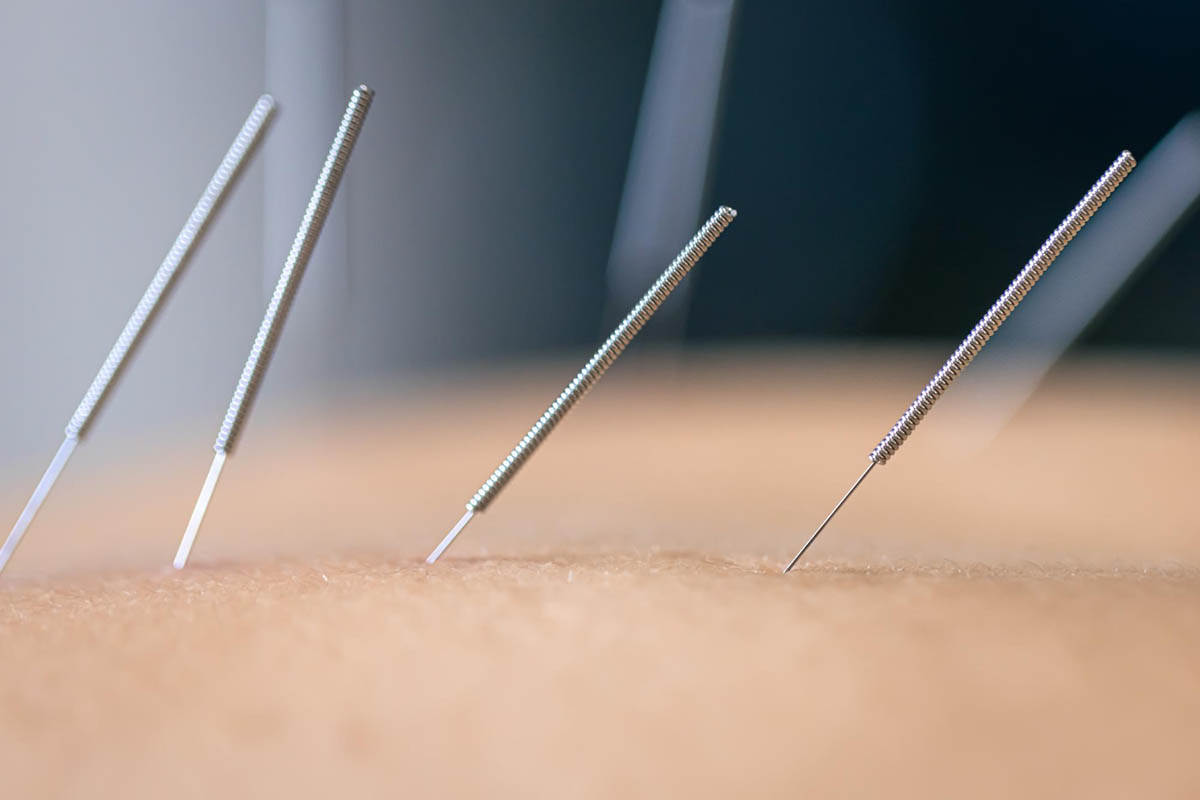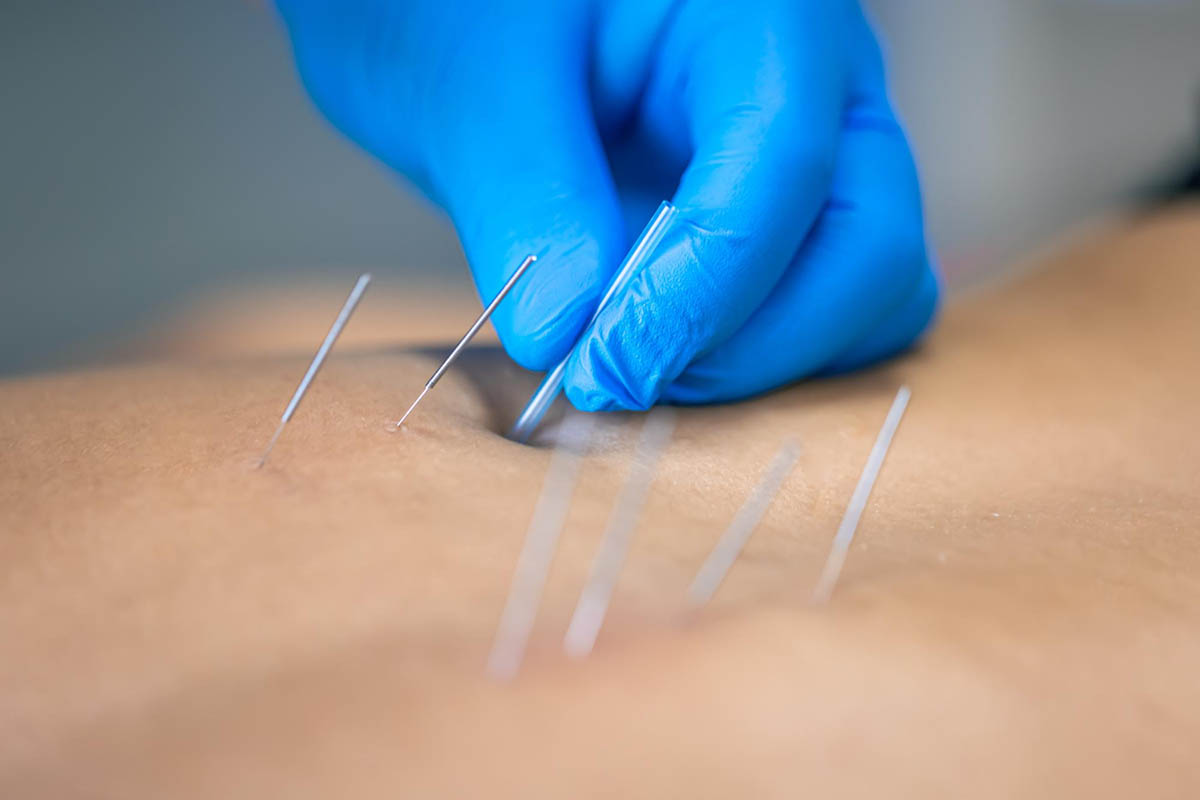Dry needling is an innovative physical therapy technique that utilizes thin, stainless steel needles to target and release trigger points in muscles. This therapy aims to alleviate pain, improve mobility, and promote healing by stimulating muscle fibers and connective tissues. In this article, we’ll explore the benefits of dry needling, understand trigger point pain, and delve into the top five health benefits of this therapeutic approach.
What is Dry Needling?
Dry needling is a therapeutic technique that involves inserting fine, solid filiform needles into the skin and muscle tissue directly at trigger points. These needles do not inject any substance into the body; hence the term “dry.” The goal of dry needling is to alleviate muscular pain and dysfunction by stimulating these trigger points, which are often hyperirritable spots within a taut band of skeletal muscle. This technique is similar to some practices in Chinese medicine, such as manual acupuncture, but focuses on Western medicine principles of anatomy and physiology.
How does it work?
The insertion of filiform needles into trigger points creates a local twitch response, a brief, involuntary contraction of the muscle. This response helps to release muscle tension, reduce pain, and improve blood flow and oxygenation to the affected area. The increased muscle blood flow and stimulation of the nervous system contribute to faster recovery and improved muscle function. The dry needling technique, sometimes enhanced with electrical stimulation, can further augment these benefits by providing additional muscle relaxation and pain relief.
What is Trigger Point Pain?
Trigger point pain refers to localized pain or discomfort that originates from tight knots in muscles, known as myofascial trigger points. These points can cause pain in the immediate area or refer pain to other parts of the body, leading to a variety of symptoms and discomfort. Trigger points are often found in painful muscles and can significantly impact an individual’s quality of life, affecting muscle tissue and joint pain.
What Causes Trigger Point Pain?
Repetitive muscle movements
Repetitive motions, such as those performed during sports or occupational tasks, can lead to the development of trigger points due to continuous muscle strain and fatigue. This type of movement impairment is common in athletes and individuals with physically demanding jobs.
Lifting heavy weights or objects
Lifting heavy items without proper technique can place excessive stress on muscles, leading to the formation of trigger points and subsequent pain. This is especially true for larger muscles involved in heavy lifting, such as those in the back and legs.
Direct injury
Acute injuries, such as muscle strains or tears, can result in the development of trigger points as the body responds to the trauma with muscle tightening and protective mechanisms. These injuries can lead to significant muscle pain and limited movement.
Poor posture
Sustained poor posture, whether sitting or standing, can lead to muscle imbalances and trigger point formation, contributing to pain and discomfort. Poor posture often results in shoulder pain, neck pain, and back pain.
Tense muscles
Chronic muscle tension, often due to stress or overuse, can cause muscles to become tight and develop trigger points, leading to persistent pain. Tense muscles are a common cause of musculoskeletal pain and discomfort.
Chronic stress
Prolonged stress can cause the muscles to remain in a constant state of tension, increasing the likelihood of trigger point formation and associated pain. Stress management and relaxation techniques can help reduce this risk.
5 Health Benefits of Dry Needling

Pain Relief
One of the primary benefits of dry needling is its ability to provide significant pain relief. By targeting and releasing trigger points, dry needling can alleviate both localized and referred pain, helping individuals find relief from chronic pain conditions and acute injuries alike. This includes relief from neck pain, shoulder pain, hip pain, knee pain, and other types of musculoskeletal pain. Dry needling therapy is particularly effective for patients with shoulder pain and those suffering from widespread pain conditions.
Improved Range of Motion
Dry needling can enhance flexibility and range of movement by reducing muscle tightness and tension. This improvement allows for greater ease of movement and can be particularly beneficial for athletes and individuals recovering from injuries. Improved range of motion is essential for active rehabilitation and maintaining overall physical health.
Research indicates that within the first 12 weeks of treatment, dry needling can effectively reduce pain and increase the pressure pain threshold when compared to control or sham treatments. While there is some evidence suggesting continued pain reduction at 6 to 12 months, the long-term effects are not statistically significant.
Faster Recovery and Healing
The increased blood flow and oxygenation to the treated areas promote faster healing and recovery. By reducing inflammation and promoting tissue repair, dry needling can accelerate the recovery process, helping individuals get back to their daily activities more quickly. The benefits of dry needling physical therapy include quicker recovery times and improved overall function.
Reduced Muscle Tension
Dry needling effectively targets and releases tight knots within muscles, reducing overall muscle tension. This relaxation of muscles can lead to decreased discomfort and improved muscle function. Reduced muscle tension also helps prevent the recurrence of painful trigger points.
Ease Chronic Pain Conditions
For individuals suffering from chronic pain conditions such as fibromyalgia, orofacial pain, or myofascial pain syndrome (MPS), dry needling offers a viable treatment option. By addressing the underlying trigger points, dry needling can provide long-term relief and improve the quality of life for those with chronic pain. This effective treatment is often used in conjunction with other physical therapy techniques to manage and alleviate chronic pain. Although the exact prevalence of MPS in the general population is not well-documented, it is known that between 30% to 85% of individuals with musculoskeletal pain experience this condition.
Consult Mitchell Holistic Health and Discover How Dry Needling Can Help You

At Mitchell Holistic Health, we specialize in providing comprehensive, patient-centered care that integrates innovative therapies like functional dry needling. Our experienced practitioners are dedicated to alleviating your pain, improving mobility, and enhancing overall well-being through personalized treatment plans. Whether you are suffering from chronic musculoskeletal pain, seeking to improve your range of motion, or looking to accelerate your recovery, our holistic approach ensures you receive the highest quality of care tailored to your specific needs. Experience the transformative benefits of dry needle treatment and other advanced therapies at Mitchell Holistic Health, where your health and wellness are our top priorities.
Conclusion
Dry needling is a powerful and effective physical therapy technique that offers numerous health benefits, from pain relief to improved range of motion and faster recovery. By targeting and releasing trigger points, dry needling can address a variety of musculoskeletal issues and enhance overall well-being. When considering what are the benefits of dry needling, it’s clear that whether you suffer from neck pain, shoulder pain, or chronic musculoskeletal pain, dry needling may be the solution you need.
FAQ’s
How long does it take to feel the benefits of dry needling?
Many individuals begin to feel relief after just one or two sessions of dry needling. However, the duration of time to experience benefits can vary based on the severity of the condition and individual response to treatment. The benefits of dry needling with electrical stimulation may be felt even sooner due to enhanced muscle relaxation and pain relief.
What happens to your body after dry needling?
After a dry needling session, you may experience immediate relief from pain and muscle tightness. Some individuals might feel soreness in the treated area, similar to the feeling after a deep tissue massage, which typically resolves within a day or two. The increased blood flow and stimulation of the nervous system contribute to the healing process.
How do you know if dry needling is working?
You will know dry needling is working if you experience a reduction in pain, improved range of motion, and decreased muscle tension. Regular sessions may be needed to maintain these benefits and address chronic conditions effectively. Improvement in pain intensity and function are key indicators of successful treatment.


